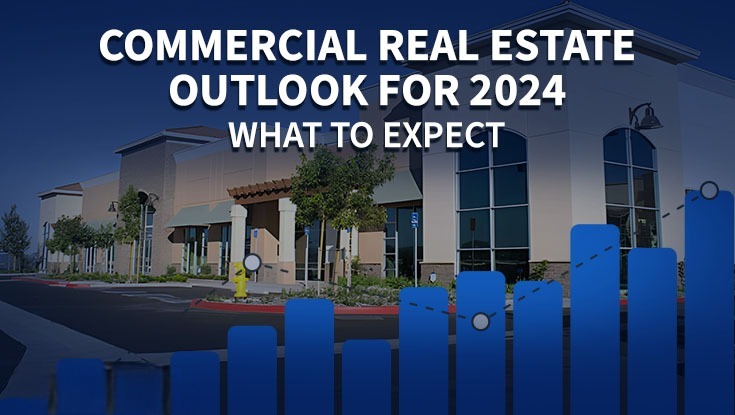Low-capital multifamily investing involves purchasing and managing apartment buildings. It only requires a minimal initial investment.
In this article, we’ll guide you on how to succeed in this field, even with limited funds. It covers essential topics to maximize returns. If you want to succeed in this investing path, read on.
Maximizing Returns of Low-Capital Multifamily Investing
Residential loans are for owner-occupied properties. They’re attractive because of their lower interest rates and more extended repayment periods. However, they come with a cap, which limits funding for more ambitious projects.
Commercial loans check the property’s income-generating potential. They are tailored for non-owner-occupied properties. More significant borrowing limits balance out higher interest rates and shorter terms. They open doors to large shared investments.
Moreover, you can choose between these based on many factors. These include the project’s scale, its location, and your financial standing.
Collaborating for Greater Investment Scale
Real estate syndication brings together individual investors. It pools resources to tackle larger, more profitable ventures. Its key benefits include:
- Entry into premier real estate deals
- Portfolio diversification across various markets
- Shared risk and enhanced potential returns
It’s crucial to find the proper syndication of low-capital multifamily investing opportunities. This involves connecting with a network of professionals and exploring dedicated platforms. It’s about using collective expertise for mutual benefit.
Maximizing Your Tax Strategy for Financial Success
Understanding how to apply depreciation can reduce taxable income. Consequently, this can lead to increased cash flow and returns on investment.
Capitalizing on Real Estate Tax Benefits
Beyond depreciation, real estate investment comes with a suite of tax advantages. These are designed to incentivize and reward investors. Here’s a look at the ways savvy investors can diminish their tax liabilities:
- Mortgage Interest Deduction: This allows investors to deduct interest payments. These are deductions on taxes related to loans for property investments.
- Capital Gains Tax Advantages: Investors can defer taxes on profits from property sales. This can be done by leveraging lower tax rates on long-term capital gains. It’s also achieved by employing 1031 exchanges.
- Strategies for Optimization: Thorough consultation with tax professionals is crucial. You must also stay updated on tax law changes and use a diversified approach.
Real estate investors can enhance their portfolio’s performance. They can do this by maximizing the tax benefits of low-capital multifamily investing. They can likewise protect their profits from excessive taxation. This will result in more tremendous financial success.
Analyzing Market Segmentation Through Strategic Targeting
Choosing the right market requires a detailed analysis of various factors. Focus on the market’s potential for growth and stability. Investors must consider the following:
- Market Research: In-depth analysis using demographic data, economic reports, and real estate trends.
- Fundamental Indicators: These include population growth and job market diversity. These also involve economic stability and development activity.
- Selection Strategies: Use demographic data and collaborate with local experts. Focus on emerging markets and diversify investment locations.
Identifying markets with these characteristics allows investors to set their focus. They can find regions with the most promising return on investment potential.
Analyzing Market Stability and Growth Potential
Stable markets in low-capital multifamily investing offer two main advantages. They are the security of consistent rental demand and low vacancy rates. Meanwhile, markets with high growth potential can provide the following:
- Stability Assessment: Look at historical performance, vacancy rates, and rent growth.
- Growth Evaluation: Consider future development, infrastructure projects, and economic forecasts.
- Risk Management: This involves investment diversification. Investors must also stay updated on market trends. They must adjust strategies as needed.
By selecting markets based on these criteria, investors can mitigate risks. They can also maximize the long-term success of their combined investment portfolios.
Achieving Financial Goals Through Strategic Asset Management
Good asset management keeps shared investments successful and valuable. Strategic property management means doing things to make the property better over time. These include the following:
- Implementing Modern Technologies: These streamline operations while improving tenant satisfaction. These technologies include the adoption of smart locks and online payment systems. Good property management software can also help in the process.
- Maintenance and Upgrades: Regular inspections and maintenance reduce operating costs. These steps also enhance tenant appeal.
- Competitive Rental Rates: Offering fair rental prices ensures the attraction of high-quality tenants. This minimizes vacancies.
Optimizing Low-Capital Multifamily Investing Operations
The backbone of a successful investment is the optimization of operations. This boosts cash flow. It involves a meticulous approach and steps that include the following:
- Cost-Saving Measures: Some initiatives impact the bottom line by reducing expenses. These include bulk purchasing, energy-efficient improvements, and effective vendor negotiations.
- Financial Analysis: A regular review of financial statements helps identify areas for improvement. It tracks cash flow trends and strategizes for enhanced profitability.
- Operational Efficiency: Utilizing data analytics and property management software automates and streamlines processes. This leads to reduced labor costs and improved operational efficiency.
Optimizing cash flow also involves strategies. These include implementing gradual rent increases in line with market conditions. You can also make the property more valuable by adding features and services, boosting its worth in the long run.
The goal is for investors to realize the full potential of their communal properties. They can do this by focusing on effective asset management in low-capital multifamily investing. This ensures sustained growth and profitability in their real estate portfolios.
Frequently Asked Questions
What does a reasonable capitalization rate (cap rate) look like for communal properties?
A reasonable share investment cap rate falls between 4% and 10%. Higher rates might show higher risk or a higher return on investment.
How does the cap rate differ from return on investment (ROI)?
The cap rate shows how much money a real estate investment could make compared to its price. It focuses on expected rental income. ROI looks at an investment’s profit. It considers all costs and income during the whole investment period.
What’s considered a solid return on investment for combined properties?
A solid ROI for low-capital multifamily investing is generally considered to be above 8%. Yet, this can vary depending on factors. Higher ROIs reflect better profitability but might also come with higher risks.
Conclusion
When exploring low-capital multifamily investing, it’s essential to understand strategic financing. It’s also a must to know about pooling resources through syndication. All these will make it easier to manage assets for growth. If you’re ready to seek expert guidance, contact StoutCap for tailored investment opportunities.
Disclaimer:
Investing in real estate involves risks, including the potential loss of capital. You must consult a financial advisor or legal professional before making investment decisions. StoutCap values transparency and compliance and strictly follows regulatory guidelines. This ensures the integrity and security of your investments.







